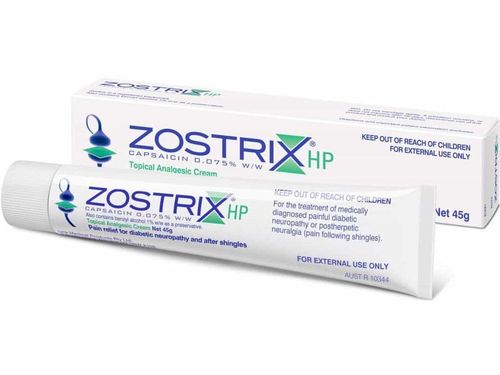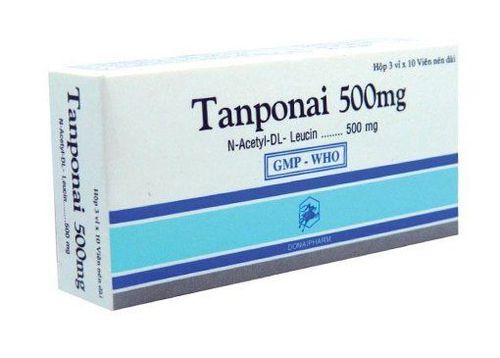This is an automatically translated article.
Rhabdomyolysis is one of two types of muscle relaxants used clinically to treat muscle spasms. In the process of using rhabdomyolysis, patients need to pay attention to some issues to ensure effectiveness and avoid side effects. So how should antispasmodic drugs be used and what should be noted?
1. What is a rhabdomyolysis pain reliever? Rhabdomyolysis or rhabdomyolysis is the name given to many drugs that work to relax or reduce muscle spasms. The usual indications of this group of drugs are: acute muscle pain, relief of discomfort caused by muscle spasms. The muscle spasms are involuntary, causing the patient's muscles to be tense, excessive spasms, common in the case of lumbar muscle pain, muscle pain in the neck.
The currently used rhabdomyolysis pain relievers have different chemical structures and mechanisms of action. However, the mechanism of these drugs is to inhibit the central nervous system, causing sedation or inhibiting the signal between the nerves and the brain. Antispasmodics are usually quick-acting and last 4-6 hours. However, similar to other modern drugs, users of rhabdomyolysis pain relievers may experience some side effects, including:
Drowsiness; Dizziness, headache; Irritability, agitation; Feelings of anxiety; Dry mouth ; Lower blood pressure. In addition, prolonged or excessive use of antispasmodic drugs can lead to drug dependence and other serious side effects such as hallucinations, convulsions, and shock. , respiratory failure, cardiac arrest... Therefore, rhabdomyolysis drugs are only used short-term for 2-3 weeks.

Người sử dụng thuốc giảm đau giãn cơ vân có thể gặp một số tác dụng phụ
2. Some centrally-mediated rhabdomyolysis rhabdomyolysis acts on the CNS through selective inhibition of neurons that control muscle tone in the brain and spinal cord living. This results in decreased muscle tone and muscle relaxation. This group of skeletal muscle relaxants does not affect neuromuscular transmission like the cura group and does not affect the reticular body, so it does not cause drowsiness.
2.1. Tolperisone drug Tolperisone is one of the drugs in the group of CNS-active rhabdomyolysis pain relievers, with dosage forms such as 1ml-100mg injection solution, 50mg and 150mg coated tablets.
Tolperisone has a relatively complex mechanism of muscle relaxation and pain relief. With its membrane stabilizing and local anesthetic properties, Tolperisone blocks conduction between primary nerve fibers and motor neurons, thereby inhibiting both single and polysynaptic reflexes. In addition, Tolperisone has a second muscle relaxant mechanism by inhibiting the influx of calcium ions into the synapse. In the brain stem, Tolperisone inhibits the reflex between the reticular body and the spinal cord.
Indications of Tolperisone
Increase in skeletal muscle tone in central nervous system diseases such as pyramidal lesions, spinal cord disease, encephalitis...; Rhabdomyolysis in pain syndromes such as low back pain, neck pain, disease in large joints; Rehabilitation after trauma surgery - orthopedic; Treatment of thromboembolic diseases such as atherosclerosis, diabetic vascular disease, inflammatory and thrombotic embolism, Raynaud's disease, disseminated scleroderma. Common side effects of rhabdomyolysis Tolperisone
Myasthenia gravis ; Headache; Lower blood pressure; Nausea, vomiting, abdominal pain. These side effects usually disappear when the dose is reduced. Hypersensitivity reactions to Tolperisone (eg, pruritus, erythema, urticaria, angioedema, anaphylaxis, dyspnoea) are rare.
Contraindications to rhabdomyolysis pain relievers
Patients with myasthenia gravis; Children, pregnant women (especially in the first 3 months) or breastfeeding. Dosage of Tolperisone
Oral: The dose is 150-450mg/day, divided into 3 times and the dose will depend on the disease condition and tolerability of each patient; Parenteral route: Use intramuscular route, dose of 100mg/time, 2 times/day or single dose of 100mg/day, slow intravenous route.

Thuốc giảm đau giãn cơ vân Mephenesin thông qua tác động lên hệ thần kinh trung ương
2.2. Eperisone drug Eperisone drug has a dosage form of 50mg tablets, the dose is 3 tablets divided into 3 times daily, taken after meals. Eperisone is a rhabdomyolysis pain reliever that acts on the central nervous system, and also acts on blood vessels, so it both relaxes skeletal muscle and vasodilates. Eperisone offers the ability to stabilize, rapidly improve symptoms associated with hypertonia. This rhabdomyolysis acts primarily on the spinal cord, inhibiting spinal reflexes and relaxing skeletal muscle by reducing muscle fiber sensitization via the gamma centrifugation system.
Indications of Eperisone
Symptomatic treatment of hypertonia in cervical and lumbar spondylolisthesis or shoulder periarthritis; Spasticity in cerebrovascular disease, spinal cord injury, cervical disc herniation, postoperative sequelae or trauma (spinal trauma, head injury). Side effects of the drug Eperisone
Liver and kidney dysfunction; Abnormal red blood cell count or hemoglobin value; Rash; Some neuropsychiatric symptoms such as insomnia, headache, drowsiness, feeling of spasticity or numbness, tremor of the extremities; Gastrointestinal symptoms such as nausea, vomiting, loss of appetite, dry mouth, constipation, diarrhea, abdominal pain; Signs of urinary disorders. 2.3. Mephenesin Mephenesin is an analgesic and muscle relaxant that acts on the central nervous system. Indicated in the supportive treatment of muscle spasms causing pain in:
degenerative spondylolisthesis and spinal postural disorders such as scoliosis, back pain, low back pain; Some conditions are unwanted muscle spasms. Mephenesin is available in 250mg capsule dosage form. The usual dose is to take 2-3 times a day, 2 tablets each time.
3. Some principles of using pain relievers for rhabdomyolysis Back pain, muscle sclerosis are common diseases that have a great impact on the patient's ability to live and live. This disease is easy to recur. Therefore, in order to minimize pain, discomfort and improve the effectiveness of the use of rhabdomyolysis drugs, patients need to adhere to the following principles:
Limit overwork or overwork. heavy lifting; Do not use alcoholic beverages, stimulants because they will reduce the effect of the drug and increase the risk of side effects; It is not recommended to drive or operate machinery while taking antispasmodics; Maintain correct sitting posture, do not fixate posture for too long; Building a diet, rest regime and healthy living habits, limiting stress; Note the contraindications of these drugs such as people with cardiovascular diseases, kidney failure, liver failure, allergies... Children should limit their use because of the risk of adverse effects on the ability to develop, complete improve musculoskeletal system; Absolutely follow the doctor's prescription and treatment regimen for maximum effectiveness; In the process of taking the drug for rhabdomyolysis, if any side effects appear, stop taking the drug and quickly consult a doctor.
Please dial HOTLINE for more information or register for an appointment HERE. Download MyVinmec app to make appointments faster and to manage your bookings easily.













